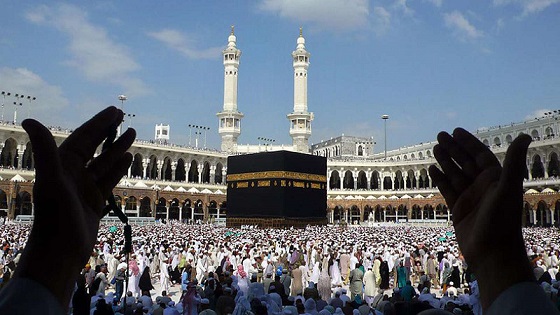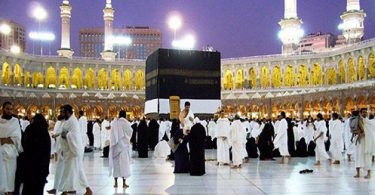Here RamadanTips.com guides you about performing Hajj in Sunni way in English.
Easy Hanafi Hajj Guide:
Table of Contents:
Performing Hajj is not that technical or difficult, as it is perceived by the people. If you take things seriously, you can pass on all the procedures easily and will have the best in your hand. There are simple steps that will connect you to the next one and you will get done with the Hajj. All you need is to have knowledge about everything that is important and necessary.
Step 1: How to Perform Hajj: Prepare Yourself
The preparations for Hajj are just similar to the preparation of Umrah; if you have performed Umrah earlier, then it is not a major problem for you to understand the things.
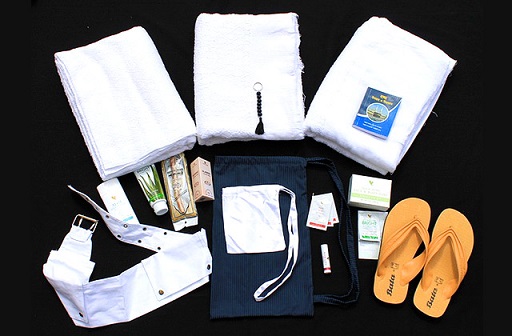
It simply requires your to make your intention and done with all the legal formalities to travel to Makkah (Mecca) Saudi Arabia. Even if you are in the same state, you need to get the permission by the government, as there are many rules for selection for the applicants of Hajj.
Once you are done with all the paper and legal activities then it is the time to prepare yourself for the Hajj.
You need to arrange your Ihram and just before your departure make sure to have a proper bath that is called Ghusal.
Also, make sure to get your hairs and nail trimmed and will have proper Taharah as well.
Before starting up your journey toward Makkah, offer 2 Rakat salah and get into your Ihram.
It is mandatory that you will get into Ihram from your home or from the hotel you are going to stay in Makkah.
Do not forget to take necessary Hajj accessories, a pocket Qur’aan and a prayer mat.
Step 2: How to Perform Hajj: Reaching Makkah

The proper practices of Hajj start in the evening of 7th Zillhajj and will remain until 10th of Zil Hajj. If you are the one who came here early then it is a good time for you. On your arrival, you can get into Ihram and can perform Umrah according to your desire or can join everyone in Ihram at 7th Zil Hajj in the evening just like you want to have.
Remember that once you are in Ihram you have to follow some restrictions and make sure to not to make any mistake in that.
Hajj Day to Day Guide
Here are Hajj steps day by day.
First Day of Hajj

- After the Maghrib prayer on 7th Zil Hajj, the day of 8th Zil Hajj starts; now you have to prepare yourself for Hajj.
- This time you will get your hair comb, trim down your nails, take bath and get into your Ihram.
- Now onwards you will have to be in your Ihram and can only change into normal clothes after the completion of Hajj.
- Once you get into Ihram, make the intention and Talbiyah then you will be under some prohibitions.
- You will move toward Mina and will stay there for the rest of the day.
- The Zuhar, Asar, Maghrib and Isha prayers will be performed in Mina and on 9th Zil Hajj.
- You will depart from there after Fajar prayer.
Second Day of Hajj – Yaumul Wuquf
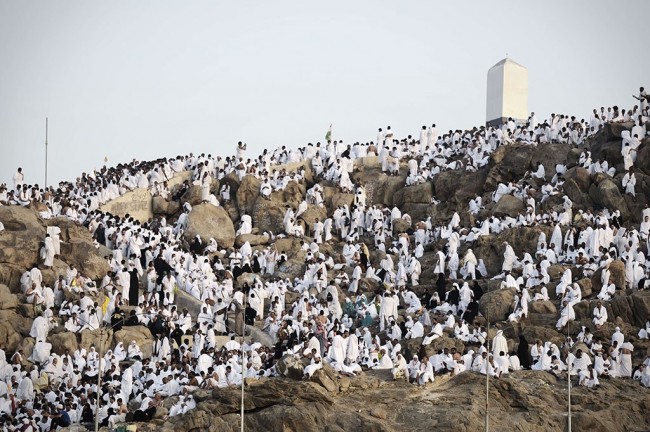
9th Zil Hajj (9th of Dhul hijjah) is the second day of Hajj, on this day you will depart from Mina to Arafat. Your journey would start at dawn (before the sunrise).
After the Fajr prayer in the morning, you will say Takbir Tashreeq till Asr:
“Allah-u Akbar, Allah-u Akbar La Ilaha ill-Allah wa-Allah-u Akbar, Allah-u Akbar wa Lillah-il-Hamd”
Takbeer e Tashreeq Mp3 Download:
Download Here (Right click and Save Link As)

At Arafat, if it is possible you should take bath or make sure to be in the state of Wudhu. In your stay at Arafat, you will recite maximum Darood Sharif and ask forgiveness for all your sins. Then after the prayer of Asar, you will leave for Muzdalfah and then you will stay there till the Fajr next day. During your stay there you have to collect small pebbles and then in the morning, you have to get back to Mina.
Third Day of Hajj
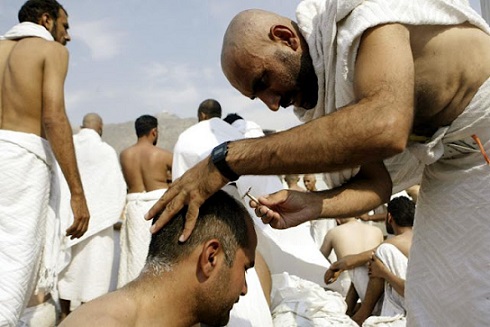
- On the third day of Hajj you will perform the Rami of Jamrah Aqabah with seven pebbles and at the first pebble you will stop the Talbiyah and after completing the Rami you will move towards the residence for Qurbani.
- After Qurbani men have to shave their head and female will cut their hair to about one inch.
- After that, you have to perform Tawaf e Ziyarah and then Sa’ee.
- After performing all the acts you will get a return to Mina for the night stay there.
Fourth Day of Hajj
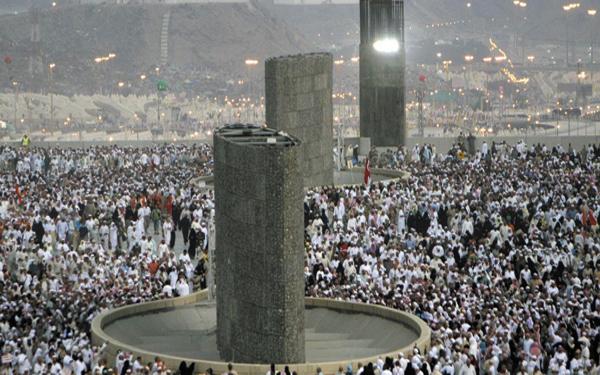
- On the fourth day you have to go again to Jamarat and throw seven pebbles on each of them and after that, if you haven’t got a chance to perform Tawaf e Ziyarah then you can do that again at this time.
- After that, you can go to your residence and get involved in your Zikr and Ibadah.
Fifth Day of Hajj
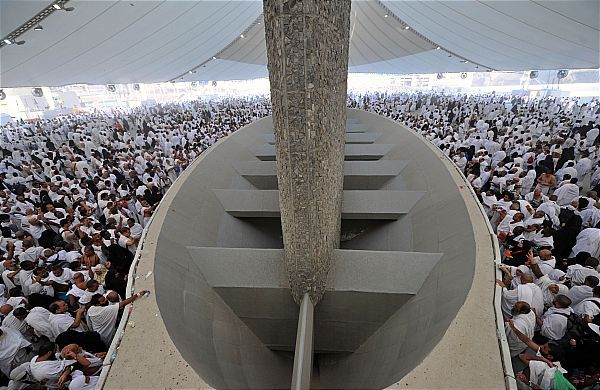
- On the fifth day, you do have to go for Rami at Jamarat and throw seven pebbles on each of the points, on this day you have last chance to perform Tawaf e Ziyarah.
- On this day, you have to return to Makkah before sunset after Rami if it is not possible for that time then stay there for the night and on the next day you can leave after throwing seven pebbles in the same order.
- Before getting back to your home, you have to perform a Tawaf e Wida that is just based on your flight timings or departure schedule.
These were basic Hajj steps day by day. Now we proceed to other important information about Hajj.
Tawaf e Wida in Hajj
The Tawaf that is recommended to be performed by the pilgrims before their departure after performing hajj, from Makkah to their homelands. It is a kind of final greetings, the Tawaf does have its own importance and a mandatory action to perform.
Tasbeeh for Hajj
Talbiyah Dua

Download Talbiyah (Right click and Save Link As)
Conditions of Wearing Ihram
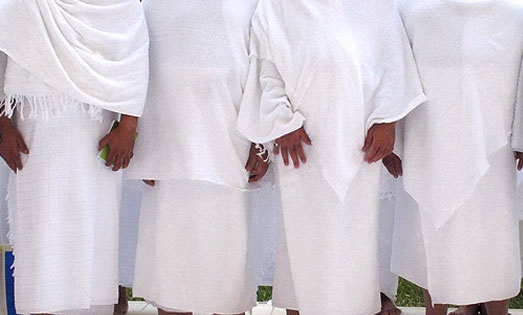
- While studying Hajj performing guide, you must know about certain conditions of Ehram. When a Muslim gets into the Ihram there are certain conditions and restrictions bound him into a code of conduct and he or she needs to ensure not to break any conditions out of them.
- For male and female, there are specific types of Ehram and both of them needs to get into the exact Ihram as it is suggested.
- For the male, they need to uncover their right shoulder and on the other hand, females have to cover their full body other than their face from the forehead to chin line.
- The pilgrims are not allowed to hunt or hurt anybody or animal in the condition of Ihram.
- Any kind of sexual activity is prohibited.
- The pilgrims need to consider their food such as they should avoid the vegetables and fruits with a strong essence and it is better to not to smell them.
- Any kind of fragrance is prohibited to be used by the pilgrims in the condition of Ihram.
- Cleanness is very much important, the pilgrims need to consider the terms of Taharah in the condition of Ihram.
Go to top: how to perform hajj
Important Hajj Tips
- All the actions you have to perform during Hajj have been mentioned here along with Tasbihat and other things, but there are some useful Hajj tips you must consider:
- You will not be the only person who is going to perform Hajj, there will be millions of other people who came there from different cultural and social backgrounds.
You need to maintain good relations with them and behave nicely in order to build up positivity in the whole environment. - In the premises of Haram Sharif, you are not allowed to harm or threaten any person or entity as during Hajj you need to be polite and calm to keep things simple and easy.
- Due to the presence of a number of people at the place, you have to face a lot of problems in performing your activities and you might not reach some points such as Hateem, Hajr e Aswad and many other points as well. So, do not take things in a discouraging manner and strive to be there, in fact, try out the substitutes.
- Specifically for the females, it is highly recommended to avoid the crowd even during Hajj due to the restrictions of Mehram and non-Mehram.
- It is important to keep in mind that Hajj will not be a luxury and easy for you in general, it does require your efforts and energy as you are going to get close to the reality of your creation and will experience something actually out of the world. Therefore, it is good to hook up yourself with confidences and look forward to the better things in life.
Things to Remember Before Departing for Hajj:
- Just before departing for Hajj, you must attend the mandatory Hajj classes organized by the state in order to educate Hajj pilgrims about the Hajj procedure and to take things to the next step.
- On the other hand, there are several guides available that help you to note down all the necessary things that will help you to be at your best and ultimate level of performing all the prayers with dedication and accuracy.
What is the Hajj?
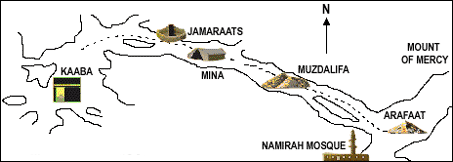
Hajj (pilgrimage) is a practical ibadah (worship) in Islam that is not compulsory for every Muslim but mandatory for those who can afford its expenses. A person who has enough money that he has fulfilled all his responsibilities and has no debt payable on his account is eligible to perform Hajj.
This grand prayer comes across in the lives of Muslims once in the year and everyone makes his or her best try to be there and get all the blessings of ALLAH Almighty. Performing Hajj is not difficult but requires so much of courage and a good health as well.
Hajj is performed every year in the month of Zil-Hajj from 1st to 10th of the month. The actual practices of Hajj start from the 8th of Zil Hajj and will end up on 10th of Zil Hajj when all the Muslims end up their Hajj practices with the Tawaf e Ziyarah.
Hajj is all about being in the holy cities of Makkah and Madina, spend time there, offer prayers and meet other Muslims from all over the world. This is actually the time when a Muslim can get rid of all the bad habits and look forward towards the better coming future. It is said that a person who did Hajj will get a new life and have the opportunity to make a good start.
In order to perform the Hajj with all of its necessary postulates and protocols, it is necessary for every performer to know about it in depth and get the whole education and information about how to perform Hajj. It is not a common practice and so people may have problems or loops in their practices however these can be avoided if pre-addressed.
Types of Hajj
Hajj is classified into three types on the basis of performance:
- Hajj e Ifrad: When a person enters in Miqaat in the state of Ihram with the intention of performing Hajj and will not combine Umrah with it, will be referred to as Mufrid and Hajj will be termed as Hajj e Ifrad. This kind of Hajj is only allowed for the people living in Makkah or its premises.
- Hajj e Qiran: Qiran means to combine two things, the person who performs Umrah and Hajj combined with the same Ihram is termed as Qiran.
- Hajj e Tamattu: The person who performs Hajj e Tamattu is known as Mutamatti. Tamattu means taking advantage of a facility, the person will perform Umrah and Hajj with the same Ihram in this type of Hajj but the only difference is Mutamatti relinquishes his or her Ihram and on 8th Zil – Hajj resumes that Ihram.
See how to perform Umrah (step by step)
After studying this day to day Hajj offering guide, you must have gained the basics about how to perform Hajj with its types, conditions, and all important things. We pray that your Hajj prayers be accepted in the court of ALLAH (SWT).

